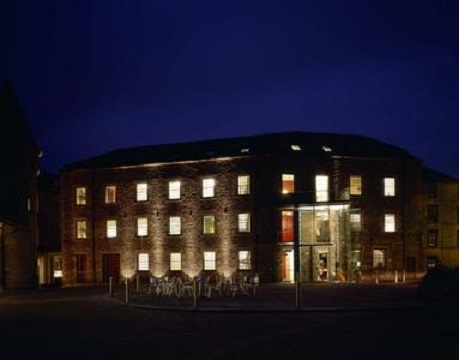Drumlanrig's Tower: Difference between revisions
No edit summary |
No edit summary |
||
| (4 intermediate revisions by the same user not shown) | |||
| Line 1: | Line 1: | ||
; '''[[Hawick]]''' | ; '''[[Hawick]]''' | ||
[[File:Night hawick drumlanrig's tower.jpeg]] | |||
Drumlanrig’s Tower is quite a unique tower-house regarding its location and history. Situated in the heart of Hawick, it was for many years part of the Tower Hotel until it closed in the 1990s and opened in 1995 as a tourist and interpretative center. | <br> | ||
<br> | |||
'''Description:''' Drumlanrig’s Tower is quite a unique tower-house regarding its location and history. Situated in the heart of Hawick, it was for many years part of the Tower Hotel until it closed in the 1990s and opened in 1995 as a tourist and interpretative center. | |||
'''History:''' William Douglas erected the '''''Black Tower of Drumlanrig''''' in the 16th century, as an L-planned building with a small courtyard walled off in the re-entrant. In the 18th century the tower was extended as a townhouse residence of Anne, Duchess of Monmouth and Buccleuch. By around 1773 it had been converted to the main inn in the town, visited on 22nd September 1803 by Sir Walter Scott, and William and Dorothy Wordsworth. The tower is the location for exhibitions on the history of the Border country, the subjects of which go from Romans to knitwear and local history. There is also an exhibition of watercolors by the artist Tom Scott. | |||
---- | |||
http://www.heartofhawick.co.uk/drumlanrig/ | |||
Latest revision as of 01:20, 31 January 2014

Description: Drumlanrig’s Tower is quite a unique tower-house regarding its location and history. Situated in the heart of Hawick, it was for many years part of the Tower Hotel until it closed in the 1990s and opened in 1995 as a tourist and interpretative center.
History: William Douglas erected the Black Tower of Drumlanrig in the 16th century, as an L-planned building with a small courtyard walled off in the re-entrant. In the 18th century the tower was extended as a townhouse residence of Anne, Duchess of Monmouth and Buccleuch. By around 1773 it had been converted to the main inn in the town, visited on 22nd September 1803 by Sir Walter Scott, and William and Dorothy Wordsworth. The tower is the location for exhibitions on the history of the Border country, the subjects of which go from Romans to knitwear and local history. There is also an exhibition of watercolors by the artist Tom Scott.